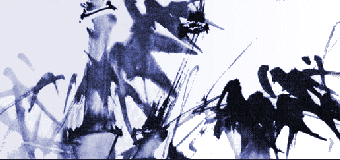Treatable Conditions
 How can Acupuncture help? How can Acupuncture help?
Acupuncture and Traditional Chinese Medicine complements conventional medicine.
They are not substitutes for any conventional medical advice, medications or
treatments. As a complement to conventional medicine, acupuncture can treat
both acute and chronic problems such as insomnia, digestive and elimination problems,
headaches and migraines, sleeping disorders, chronic pain, stopping smoking and eating disorders, weight loss, and much more.
Acupuncture can help to reduce or eliminate the need for
medications for many conditions including narcotics and other pain-relievers, but your
family doctor must always be consulted in such instances.
Traditional Chinese Medicine looks at illnesses from a different perspective
than conventional medicine. The basic tenet of Chinese Medicine is that we have a life force
that energizes all the metabolic activity in our bodies, and this life forces (often referred
to as "qi") is always moving and flowing. When qi flows unimpeded, we are healthy. When qi
is blocked, we get pain and ultimately disease. The strategy of
the Practitioner of Oriental Medicine is to find the areas of blocked energy, and help remove
those blocks, which in turn helps the body return to its natural healthy state.
When you first enter an the office of an acupuncturist, the practitioner will sit with you
and do an intake. We are interested in all your symptoms and medical history which helps,
which helps us start to determine our treatment strategy. The Chinese medical model is often
very effective at treating hard to diagnose problems since it does not rely on having to know
the biochemical reason for your condition, which is not known in most cases, particularly where
blood tests and MRI's are normal. Even when blood tests show imbalances, it is not usually
known why this is happenting.
This difference in perspective means that Traditional Chinese Medicine can often make sense of
illnesses that Western medicine has difficulty treating. In cases where Western medicine may be
limited to prescribing medication for symptom management, acupuncture may be able to
intervene and encourage the body in a self-healing process. Acupuncture/Oriental Medicine is
currently the fastest growing healing modality in the country.
 The NIH Consensus Statement on Acupuncture The NIH Consensus Statement on Acupuncture
In 1997 the U.S. National Institutes of Health published a Consensus Statement on the use and
effectiveness of acupuncture for a variety of conditions.
Acupuncture as a therapeutic intervention is widely practiced in the United States. While there have been many studies of its potential usefulness, many of these studies provide equivocal results because of design, sample size, and other factors. The issue is further
complicated by inherent difficulties in the use of appropriate controls, such as placebos and sham acupuncture groups. However, promising results have emerged, for example, showing efficacy of acupuncture in adult post-operative and chemotherapy nausea and vomiting and in post-operative dental pain. There are other situations such as addiction, stroke rehabilitation, headache, menstrual cramps, tennis elbow, fibromyalgia, myofacial pain, osteoarthritis,
low back pain, carpal tunnel syndrome, and asthma where acupuncture may be useful as an adjunct treatment or an acceptable alternative or be included in a comprehensive management program. Further research is likely to uncover additional areas where acupuncture interventions will be useful.
1
View the full Consensus.
 The World Health Organization The World Health Organization
In the hands of a well-trained practitioner, acupuncture has much broader applications beyond
pain relief. The World Health Organization (WHO) recognizes the use of acupuncture in the
treatment of a wide range of common illnesses including:2
- Upper Respiratory Tract
- Acute sinusitis
- Acute rhinitis
- Common Cold and Flu
- Acute tonsillitis
- Respiratory System
- Acute bronchitis
- Bronchial asthma (Most effective in children and uncomplicated conditions.)
- Eye Disorders
- Acute conjunctivitis
- Central Retinitis Myopia (in children)
- Cataracts (without complications)
- Mouth Disorders
- Toothache
- Post Extraction Pain
- Gingivitis
- Acute and Chronic Pharyngitis
- Gastrointestinal Disorders
- Spasms of esophagus
- Hiccough
- Gastroptosis
- Acute and Chronic Gastritis
- Gastric Hyperacidity
- Chronic Duodenal Ulcer (pain relief)
- Acute Duodenal Ulcer (without complications)
- Acute and Chronic Colitis
- Acute Bacillary Dysentery
- Constipation
- Diarrhea
- Paralytic Ileus
- Neurologic and Musculoskeletal Disorders
- Headache and Migraine
- Trigeminal Neuralgias
- Facial Palsy (early stage, i.e., within 3-6 months)
- Pareses Following a Stroke
- Peripheral Neuropathies
- Sequelae of Poliomyelitis (early stage, i.e., within 6 months)
- Meniere's Disease
- Neurogenic Bladder Dysfunction
- Nocturnal Enuresis (bedwetting)
- Intercostal Neuralgia
- Cervicobrachial Syndrome
- Frozen Shoulder
- Tennis Elbow
- Sciatica
- Low Back Pain
- Osteoarthritis
- Carpal Tunnel Syndrome
- Back and Knee Pain
- Fibromyalgia
- Chronic Fatigue
- Sports Injuries and Pains
- Reproductive & Gynecological Conditions
- Premenstrual Syndrome
- Dysmenorrhea (menstrual cramps)
- Spotting and Excessive Bleeding
- Amenorrhea (Loss of Menstrual Period)
- Impotence
- Infertility
- Incontinence
- Prostatis
- Mental Emotional Problems
- Stress
- Anxiety
- Depression
- Insomnia
The World Health Organization Interregional Seminar compiled the above list of illnesses that
may benefit from acupuncture treatment. The list is only a partial list and is based on clinical
experience, and not necessarily on controlled clinical research. The inclusion of specific
diseases are not meant to indicate the extent of acupuncture's efficacy in treatment, since
all conditions may vary in severity and response.
Sources:
1. NIH, Acupuncture, Nov. 3-5, 1997, Vol. 15, No. 5
2. World Health Organization. Viewpoint on Acupuncture. Geneva, Switzerland: World Health
Organization, 1979.
|



